If you do any DIY electrical or electronics work, it is inevitable that you need to use heat shrink tubing at some point. It is a versatile product that lets you insulate wires, add strain relief, color code cables, and even more. With special types of heat shrink you can even waterproof and solder!
Insulating wires with heat shrink is fairly straightforward, but it is important that you know a couple of tips and tricks to avoid unnecessary mistakes.
In this article I will teach you how to pick the right size and type of heat shrink for your project, share a step by step guide for using heat shrink and teach you everything else you need to know to get the best results.
What is Heat Shrink Tubing?
Heat shrink tubing (also known as heat shrink) is a shrinkable plastic tube with many useful applications in electronics work. It shrinks along its radius when exposed to heat, which is where its name comes from.
Heat shrink is available in a variety of materials, colors and sizes. No matter the wire size, shrinkage requirement or environmental demands, there is a heat shrink that is right for that specific application.
What is Heat Shrink Used for?
The properties of heat shrink tubing make it suitable for a wide range of applications. Most of these are related to wires and cables, but it is also possible to use it with other objects. Here are some of the most popular ways to use heat shrink.
Electrical Insulation
One of the main ways in which heat shrink tubing is used, is to electrically insulate wires, solder joints, splices and terminals. Because heatshrink is non-conductive, it forms a protective layer that prevents accidental short circuits.
Aside from insulating electrical connections, heat shrink can also be used for repairs. For example, a wire with damaged insulation and exposed copper can be easily fixed with a section of shrink tubing.
Preventing Damage
In situations where moving parts have the potential to get damaged, heat shrink is an excellent way to create a layer of physical protection from abrasion, accidental cuts or scuffs.
Because the shape of heat shrink adapts to the components it surrounds, you can use it to protect a wide range of connectors, wires or solder joints.
Environmental Protection
Heat shrink tubing does not only protect against mechanical damage. It also provides a barrier that safeguards against liquids, like water, oil or acids. Similarly, heat shrink keeps dust and other unwanted small particles out.
Strain Relief
Strain relief is used to relieve mechanical stresses on wires. This is important in applications where wires are frequently moved or pulled on, like in phone chargers, for example. Without strain relief, fragile wires break quickly.
One of the easiest ways to add strain relief to cables is to add a piece of heat shrink tubing around the part of the wire that gets bent. This causes some of the forces to get transferred through the heatshrink instead of the copper wire itself. As a result, the wire will last significantly longer.
Bundling Wires
If you work with electrical systems that contain many wires, you know how convenient it is to have them neatly organized. Heat shrink is a great tool for bundling loose wires. It gives a clean result and is more compact than tie wraps.
Color Coding
Another great application for heat shrink is color coding wires. Using specific colors of heatshrink to identify certain wires removes the need to buy wire in many colors.
Which Material of Heat Shrink Tubing Should You Use?
Heat shrink comes in various materials, each with their own useful properties. Knowing their difference lets you choose the best heat shrink tubing for your needs.
Polyolefin
Polyolefin heat shrink tubing is the most popular kind, and for good reasons. It can withstand high temperatures, up to 125-135°C (257-275°F), and shrinks quickly. Furthermore, it is durable, highly flame retardant and flexible.
Keep in mind that some Polyolefin heatshrink should not be used outdoors, as UV light degrades some pigments. Black Polyolefin heat shrink is always safe in the sun.
PVC
Polyvinyl chloride (PVC) heat shrink is fairly similar to Polyolefin, but is a fair bit cheaper. If you are looking for heat shrink tubing on a budget, this is the option to go for.
Because dyeing this material is relatively easy, it comes in almost every color.
The main limitation of PVC tubing is that it is not able to withstand high temperatures. The maximum temperature it can be exposed to is typically 105°C (221°F). Touching it with a soldering iron is likely to burn it, so be careful when working with it.
Less Common Materials
- Elastomeric heat shrink tubing stands out because of its flexibility, even at low temperatures down to -75°C (-103°F). It is resistant to dangerous liquids like diesel fuels, petrol fuels and hydraulic fluid. It also has good resistance to abrasion.
- PVDF (Polyvinylidene fluoride) heat shrink is a good option if you are looking for heat shrink that resists flames or other high temperatures. Some of its other strenghts are resistance to corrosive chemicals, fuels and to perforation.
- Silicone heatshrink is both flexible and resistant to extreme temperatures. Because it does well with various sterilization methods, it is often the preferred choice for insulation in medical devices.
- PTFE (Polytetrafluoroethylene/Teflon) heat shrink is non-reactive and thus highly resistant to chemicals. Its low coefficient of friction makes it extremely slippery and it has a wide operating temperature range of -55 to 175°C (-67 to 347°F).
- FEP (Fluorinated ethylene propylene) heat shrink tubing is fairly similar to PTFE in its resistance to chemicals. It shrinks at a lower temperature, however, and is a bit cheaper.
- Viton heat shrink tubing is a popular option for hydraulic equipment. It is flexible, resistant to chemicals and forms a well-sealing barrier against all kinds of liquids.
Special Types of Heat Shrink
Some types of heat shrink tubing, like marine grade or solder seal heat shrink, are useful for specialized applications. I have singled out the most popular types below.
Adhesive Lined
Adhesive lined heat shrink, also known as marine grade heat shrink, is made up of two layers. The outer layer is typically made from Polyolefin, whereas the inner layer consists of a meltable adhesive.
When adhesive lined tubing heats up, the adhesive melts at the same time as the outer layer shrinks. As a result, adhesive flows into the small leftover cavities between the heat shrink and the object that is being sealed.
The end result, after the tubing and adhesive have cooled down, is a watertight seal. Ideal for boats (hence the ‘marine grade’), cars or hobby RC projects where splashing water is a frequent occurance.
Marine grade heat shrink typically has a higher shrinkage ratio (3:1 or more) than regular heatshrink. This allows for an extra tight fit that is hard to achieve with tubing that only shrinks to half its size (2:1).
For waterproofing connectors and wires, this type of heat shrink is one of the best solutions. It also is more resistant to stretching and vibration than regular heat shrink and has more tensile strength.
Heat Shrink Butt Connectors
Heat shrink butt connectors (also known as solder seal wire connectors) are a fast and easy method to solder and seal wires without the need for a soldering iron or other soldering equipment.
They consist of an outer layer of heat shrink tubing with a section of solder on the inside. When heat is applied, the solder melts and forms a solder joint on the wires inside the connector. The outer layer of tubing shrinks simultaneously, sealing the connection in the process.
Just like marine grade heat shrink, heat shrink butt connectors often come with a heat-activated sealant for waterproofing.
Solder seal wire connectors are excellent for connecting wires in difficult to reach areas where soldering is not an option, or for emergency repairs with limited access to tools.
Clear Tubing
While most heat shrink tubing is black or colored, it is also vailable in a transparent variant. Clear heat shrink is mostly practical for inspecting connections after shrinking.
The above mentioned heat shrink butt connectors are nearly always clear because it allows you to check the quality of the solder joint after shrinking.
If your project has certain aesthetic needs, transparent heat shrink can be a great option too.
What Size of Heat Shrink Do You Need?
With so many different sizes of heat shrink tubing available, it can feel difficult to pick the right size. But once you know what to keep in mind, choosing the correct diameter heatshrink is actually fairly straightforward.
The most important thing when picking heat shrink tubing is to choose a shrunken diameter that is smaller than the smallest wire, connector or component that you are insulating.
For example, if you are looking to shrink wire with an outside diameter of 3 mm, you want to use heat shrink that shrinks to under 3 mm in diameter.
You can use 5 mm diameter tubing with a 2:1 shrink ratio for this (as it shrinks to 5/2=2.5 mm), or 8 mm heat shrink with a 3:1 ratio (shrinks to 8/3=2.6 mm). What matters in the end is that the heatshrink fits tightly around the wire/connector/component after shrinking.
In terms of the unshrunk diameter, you want it to be at least 20-30% larger than the largest component that you are covering. That way, you can position it with ease.
Supplied vs Recovered Diameter
When buying heat shrink tubing, you might see the shrunken and unshrunk diameters referred to as the recovered and supplied diameters.
The supplied diameter is the heat shrink diameter as it is supplied from the store, whereas the recovered diameter is the tubing diameter after it has recovered from heating and shrinking.
Shrink Ratio
The shrink ratio of heat shrink tubing is simply the supplied (unshrunk) diameter divided by the recovered (shrunk) diameter. For example, heatshrink with an 8 mm supplied diameter and a 4 mm recovered diameter has a shrink ratio of 2:1.
A higher shrink ratio can be useful in applications where you need a tighter fit, or when you need to slide heat shrink over a connector that is significantly larger than the wire that it is connected to, for example.
The most popular ratio of heat shrink is 2:1, followed by 3:1 and then 4:1. You can find heat shrink up to 6:1 and down to 1.2:1 ratios, but these are non-standard sizes for very specialized applications.
Calculating Heat Shrink Size
- Measure the diameter of the component that you intend to insulate. Digital calipers work best for this.
- Multiply this measurement by 1.25 so that the tubing will have enough clearance to move. In the example from the picture above, this would give us 3.4mm × 1.25 = 4.25mm.
- Choose a heat shrink with an unshrunken diameter larger than the number from step 2, and a shrunken diameter smaller than the number from step 1. In our example, 6mm tubing with a 2:1 shrink ratio would work well. It is large enough (> 4.25mm) to slide over the wire, and smaller than 4.25mm in diameter after it shrinks.
Heat Shrink to Wire Gauge Reference Guide
For simple wire insulation jobs, you can use the lookup table below to see which heat shrink tubing size you need for each wire gauge.
| Wire Gauge | Unshrunk tube diameter | |
|---|---|---|
| 10AWG |
1/5 inch | 5 mm |
| 12AWG | 1/5 inch | 5 mm |
| 14AWG | 1/6 inch | 4 mm |
| 16AWG | 1/8 inch | 3 mm |
| 18AWG | 1/8 inch | 3 mm |
| 20AWG | 1/8 inch | 3 mm |
| 22AWG | 1/10 inch | 2.5 mm |
| 24AWG | 1/12 inch | 2 mm |
| 26AWG | 1/16 inch | 1.5 mm |
| 28AWG | 1/16 inch | 1.5 mm |
Different wire insulations have different thicknesses, so the outer diameter of a wire can differ slightly, depending on the type of insulation it has. I have taken this into account when making the above table.
Usually, the wire gauge is printed in small letters on the side of the wire. If it is unclear, you can use a wire gauge measuring tool or digital calipers in combination with a lookup table to figure out the size.
Unless you need a large amount of shrink tubing of a single diameter, the best approach is to just buy a kit that has short lengths of the most common sizes. These usually last a while and make sure that you always have the right size of heatshrink at hand.
If ‘regular’ heat shrink is enough for you, a simple kit with 2:1 shrinking ratio tubing will meet your needs. If you need connections that are waterproof (for boats, cars, RC stuff, etc.), a 3:1 adhesive-lined heat shrink kit is better.
How to Use Heat Shrink Tubing on Wires
What You’ll Need
Step by Step

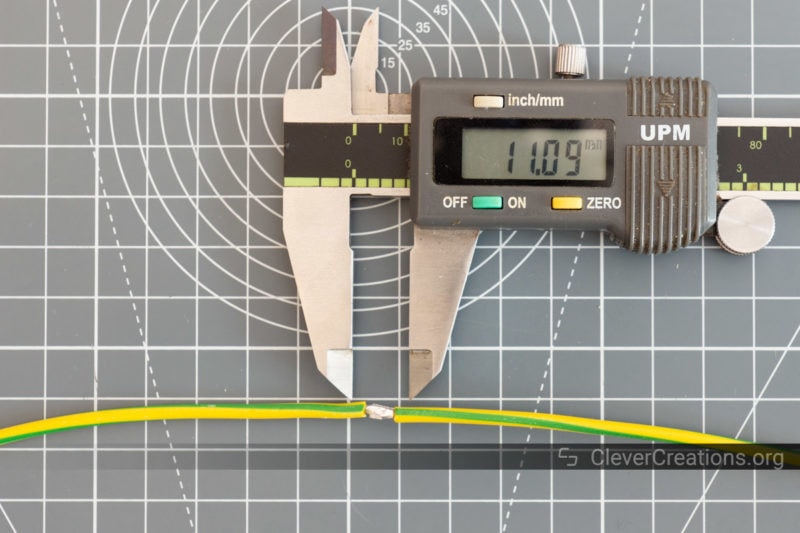


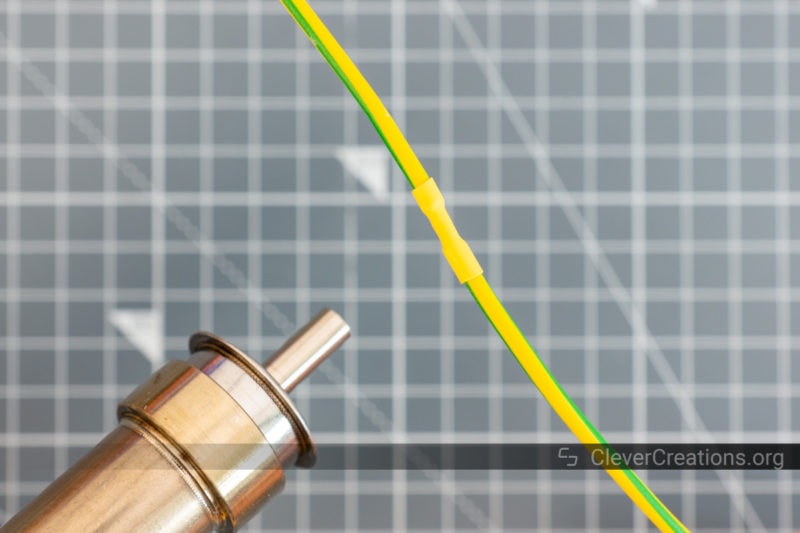

How Much Does Heat Shrink Tubing Reduce in Size?
Different tubing shrinks different amounts. It mainly depends on the shrink ratio of that particular heat shrink. For example, tubing with a 5 mm diameter and a shrink ratio of 2:1 shrinks to 2.5 mm when sufficiently heated.
Most heatshrink also slightly shrinks along its length (as opposed to its radius). This reduction in size is typically around 5-15% of the total length.
Will Heat Shrink Work if Cut?
Splitting heat shrink into smaller sections is not a problem. In fact, cutting heat shrink to an appropriate length is a crucial step in using it in your projects.
What is Heat Shrink Tubing Made of?
The most popular materials for heat shrink are Polyolefin and PVC. Aside from these two materials, you can also find more specialized heat shrink made of rubber elastomers, PVDF, Silicone, PTFE, FEP and Viton.
At What Temperature Does Heat Shrink Tubing Shrink?
The shrinking temperature of heat shrink varies and mostly depends on the used material. Every heatshrink as a recommended heating temperature that you can find in its specifications.
The typical shrinking temperature of Polyolefin is around 90°C, whereas PVC needs a slightly higher temperature of 100°C.
Why Use Heat Shrink?
Heat shrink tubing has many benefits that make it an excellent choice for insulating or adding strain relief. It shrinks quickly, it is durable, flexible and comes in a variety of colors. Adhesive-lined heat shrink comes with even more benefits, like waterproofing.
What Can I Use Instead of Heat Shrink Tubing?
A popular alternative for heat shrink is electrical tape, but you can also use hot glue (for lower voltages) or self-amalgamating tape.

One of my favorite alternatives for quick and reliable wire splicing is WAGO connectors. Ideal if you don’t need the strain relief or color coding features of heat shrink.
Does Heat Shrink Tubing Have a Shelf Life?
Heat shrink can be stored indefinitely, as long as it is stored in the right conditions. Keeping it cool, dry and out of sunlight is essential. Exposure to fluids or UV radiation can cause certain types of heat shrink to quickly degrade.
It is a good idea to inspect heat shrink tubing prior to use, especially if it has been in storage for a while. If it looks and feels like when it was new, then there should not be any problems with it. If the tubing has discolored or stiffened, however, it is likely that it will not perform as expected.
Can Heat Shrink Be Used as Insulation?
Yes, you can. Heat shrink tubing is an excellent electrical insulator. Proper UL- or CSA-certified heatshrink lists its maximum voltage under “dielectric strength” in the datasheet.
It can be harder to find the maximum voltage of cheaper heat shrink, for example of that from AliExpress. Two layers of this is still enough to insulate 120V or 230V, however. For lower voltages, one layer of tubing is sufficient.
Is Heat Shrink Tubing Conductive?
Regular heat shrink is non-conductive. This is why it is a good insulator, after all. You can find shrink tubing that is conductive on the inside, however. These pieces are called “solder seal wire connectors” and are great for creating soldered, waterproofed connections in cars or boats.
Conclusion
Heat shrink tubing is one of the best options for wire insulation. Aside from its excellent insulating properties, it comes with a variety of other useful features, like its ability to bundle cables, add strain relief or color code specific wires.
While heat shrink comes in many materials, Polyolefin and PVC are by far the most common. Both these types are affordable and sufficient for regular, non-demanding applications.
If you are looking for simple heat shrink for your DIY home or electronics projects, a quality 2:1 shrink ratio kit with multiple sizes will give you what you need while lasting a while.
For more demanding applications where waterproofing is a requirement, adhesive-lined 3:1 ratio heat shrink is a better option. This tubing creates a tighter fit around the target components and, once melted, its adhesive forms an inpenetrable seal.
If you want to form a solder joint while shrinking heat shrink, solder seal wire connectors are the way to go. These let you form waterproofed solder joints with only a heat gun.



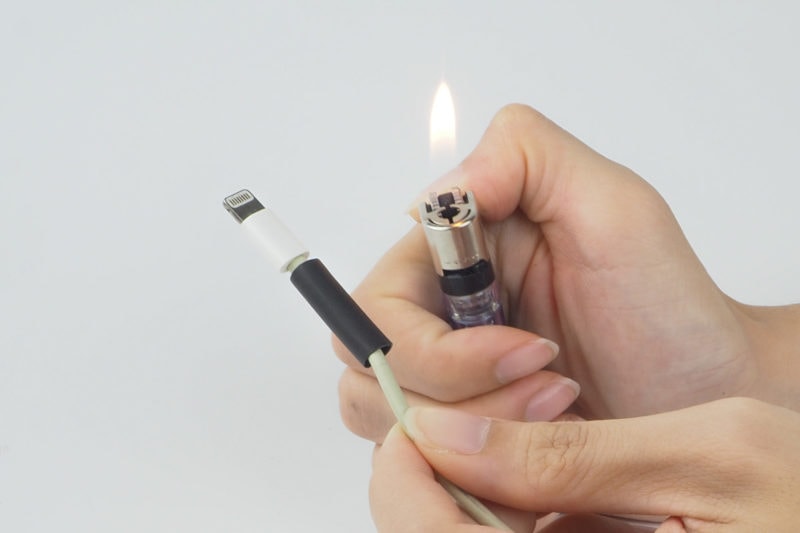
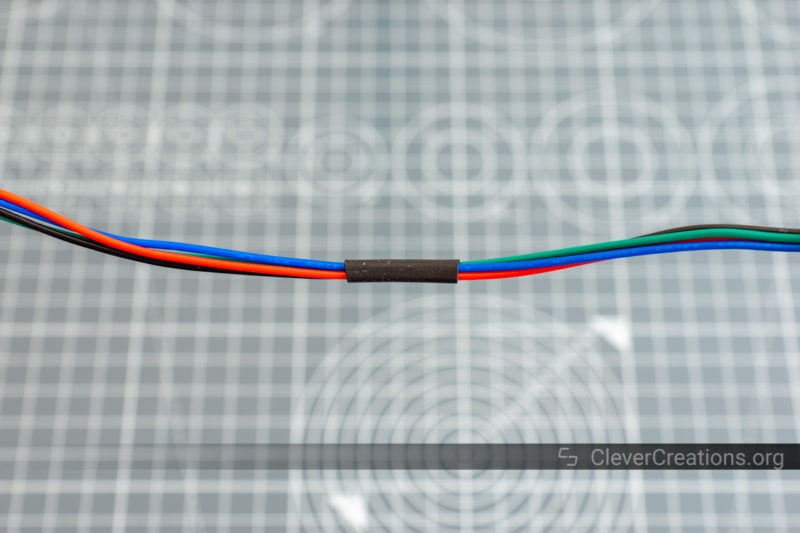









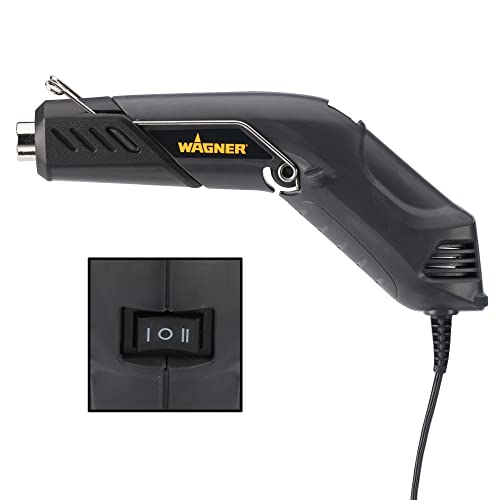




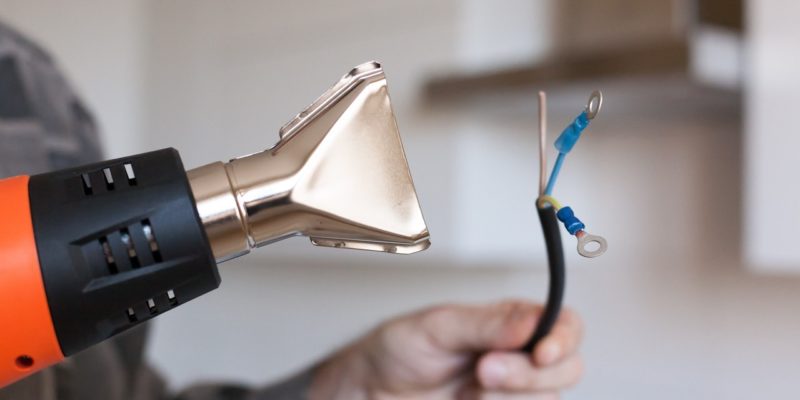

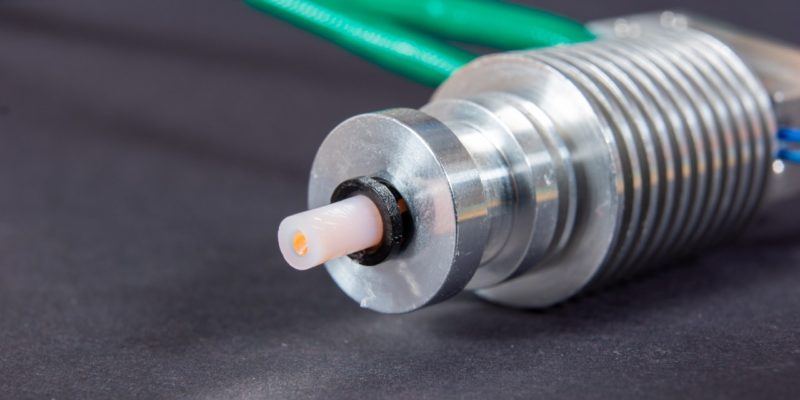


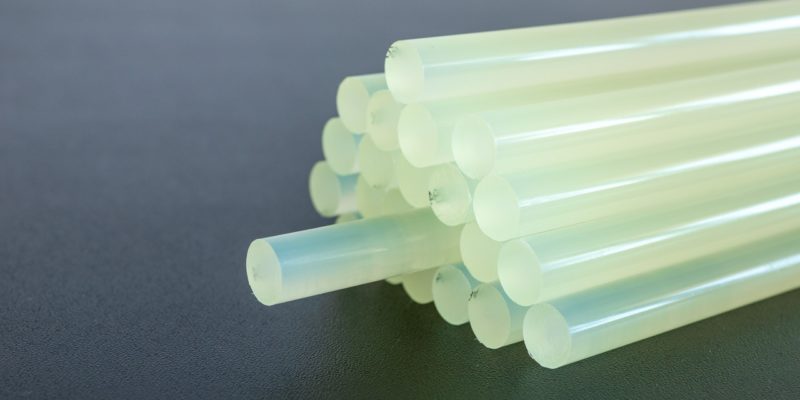


Tim, Hi.
I have many sizes of heat shrink tubing that came in meter (x) lengths and I am sorting and organizing them into clear plastic divided compartment cases. My question comes from the fact that as I cut 1.5 mm tubing it clings to each other, the case and myself with static electricity. It makes a simple job quite complex. Do you have any idea how to demagnetize this stuff? Any response would be appreciated.
Thank you and keep up the good work on the site.
Hey Doug,
Working on an anti-static mat can help prevent that. Let me know how it goes!